Home Remedies For Bacterial Vaginosis: 11 Natural Treatments
Keep your vaginal environment healthy by learning natural ways to maintain it.

Image: iStock
Bacterial vaginosis is a vaginal infection commonly seen in women between ages 15 to 44 years (1). This condition occurs as a result of an imbalance between the good and bad bacteria in your vagina. Although sometimes bacterial vaginosis may go away on its own, it is recommended that you seek quick medical intervention to prevent health complications like infertility or miscarriage (2). In this article, we explore the signs and symptoms of bacterial vaginosis and simple home remedies you can try for some relief.
 Trivia
TriviaIn This Article
What Is Bacterial Vaginosis?
Bacterial vaginosis is the vaginal infection caused by the bacteria Gardnerella vaginalis (2).
This infection occurs due to an alteration in vaginal ecology. In this infection, Lactobacillus spp., the predominant organisms of a healthy vagina, are replaced by bad bacteria (3). This causes an imbalance in the vaginal environment.
Bacterial vaginosis is a common condition that many women can develop. Fortunately, there are home remedies to treat the condition and prevent it. Let’s take a look at them in the next section.
A study estimated that bacterial vaginosis occurs in 5 to 70% of women. In the US, 30% of women between the ages of 14 and 49 are afflicted. It is most prevalent in Africa and least common in Asia and Europe. However, rates vary by ethnic group and are highest among non-white women (51% African Americans, 32% Mexican Americans).
Note: While the following home remedies may not be as effective as prescription medications, they do not have side effects and may help restore the healthy lactobacilli composition. Hence, there is no harm in giving them a try.
Key Takeaways
- Vaginal infection is caused by bacteria, seen usually in women between ages 15-44.
- The symptoms are gray vaginal discharge, irritation, itching, burning, and a strange odor.
- There are some homemade solutions like coconut oil, apple cider vinegar, garlic, tea tree oil, and fenugreek seeds to prevent it from escalating.
- Maintain vaginal hygiene and use condoms while having intercourse, and avoid processed food to prevent the infection.
11 Home Remedies To Treat Bacterial Vaginosis
- Coconut Oil
- Apple Cider Vinegar
- Hydrogen Peroxide
- Garlic
- Tea Tree Oil
- Yogurt
- Fenugreek
- Turmeric
- Cold Compress
- Vitamin C
- Cranberry Juice
1. Coconut Oil
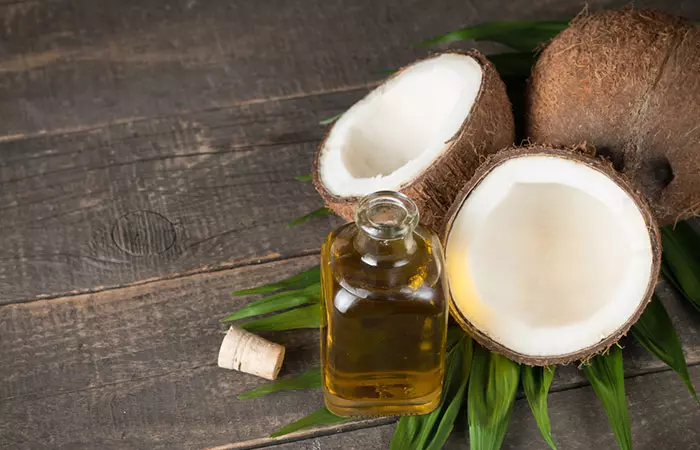
Coconut oil has antimicrobial properties (4), (5). These antimicrobial properties may combat the bad bacteria. Coconut oil may also help restore the bacterial balance within your vagina. Additionally, coconut oil has soothing and moisturizing qualities that may help alleviate the discomfort and irritation that comes with bacterial vaginosis (6).
You Will Need
Virgin coconut oil
What You Have To Do
- Freeze two to three teaspoons of coconut oil for a few minutes.
- Place the semi-solid coconut oil inside your vagina.
- Allow it to melt within.
How Often You Should Do This
Do this once a day.
2. Apple Cider Vinegar
Apple cider vinegar possesses antibacterial and antiviral properties (7). These may help fight the bacteria responsible for bacterial vaginosis. Vinegar also has antifungal and antimicrobial properties that may protect you from other microbial infections (8).
You Will Need
- Apple cider vinegar
- Bathwater
What You Have To Do
- Add the apple cider vinegar to the bathwater.
- Soak in the bath for 15 to 20 minutes.
How Often You Should Do This
Do this once a day for effective results.
3. Hydrogen Peroxide
Hydrogen peroxide is believed to be a natural disinfectant. Due to this, it may help destroy the infection-causing bacteria in the vagina (9).
A study published in the Minerva Obstetrics and Gynecology journal tested the effectiveness of hydrogen peroxide (3%) as a treatment for recurrent bacterial vaginosis in women who had not responded to other treatments. The study involved 58 women who used hydrogen peroxide for vaginal irrigations for one week, and after three months, the results showed significant improvement. Hydrogen peroxide eliminated the main symptoms of bacterial vaginosis, such as foul-smelling discharge, in 89% of women. It also helped restore healthy vaginal bacteria and normal pH levels in nearly all cases and cleared harmful bacteria and infection signs in all participants. The study concluded that hydrogen peroxide is a safe, low-cost, and effective alternative to traditional bacterial vaginosis treatments (9).
You Will Need
- 3% hydrogen peroxide
- Water
What You Have To Do
- Mix equal amounts of water and hydrogen peroxide and spray the mixture in your vagina.
- Hold the mixture inside your vagina for about 3 to 4 minutes and then drain it out.
- Alternatively, you can also soak a tampon in the mixture and place it in your vagina for 30 minutes.
How Often You Should Do This
Do this once a day for 3 weeks.
4. Garlic

Garlic contains allicin that has a strong odor and possesses antimicrobial properties against multiple strains of bacteria (10). Due to this, it may also help destroy the bacteria that cause bacterial vaginosis.
A study found that a garlic tablet could help treat bacterial vaginosis. This study was published in the Iranian Red Crescent Medical Journal and involved 120 women aged 18 to 44 diagnosed with bacterial vaginosis. The women were randomly assigned to receive either garlic tablets or metronidazole, an antibiotic drug, for seven days. After treatment, the results showed that both garlic and metronidazole significantly improved bacterial vaginosis symptoms, with a 70% improvement in the garlic group and 48.3% in the metronidazole group. However, the study also found that metronidazole caused more side effects than garlic (11). Therefore, garlic could be a great alternative to metronidazole for treating bacterial vaginosis, especially for those seeking herbal remedies or those who experience side effects from metronidazole.
You Will Need
A garlic clove
What You Have To Do
Ingest a clove of garlic with your food.
How Often You Should Do This
Do this multiple times a day.
5. Tea Tree Oil
Tea tree oil exhibits antiseptic and antimicrobial properties (12). Due to this, it may help kill the harmful bacteria causing bacterial vaginosis.
A small study published in the Antimicrobial Agents and Chemotherapy Journal showed that tea tree oil was effective in treating bacterial vaginosis. It tested the oil against various bacteria associated with bacterial vaginosis, such as Gardnerella vaginalis, Mobiluncus species, Bacteroides, Prevotella, Fusobacterium, and Peptostreptococcus anaerobius. The study found that tea tree oil was effective at inhibiting these harmful bacteria, with minimum inhibitory concentrations ranging from 0.03% to 0.5%, depending on the bacteria. Additionally, it was less effective against lactobacilli, the beneficial bacteria that naturally inhabit the vagina. These findings suggest that tea tree oil may help selectively target harmful bacterial vaginosis bacteria while having a lesser impact on lactobacilli that help preserve normal vaginal flora (13).
You Will Need
- 5-10 drops of tea tree oil
- 1 ounce of coconut oil
- Warm water
- Tampons
What You Have To Do
- Add a few drops of tea tree oil to coconut oil and add this blend to a bowl of warm water.
- Mix well and soak a tampon in the mixture.
- Place the tampon in your vagina
- Leave it in for 1 to 2 hours.
How Often You Should Do This
Do this once a day for at least a week.
6. Yogurt

Yogurt is a natural source of probiotics. Probiotics may help restore the good bacteria in the vagina. The live bacterial cultures present in yogurt may help in the treatment as well as prevention of bacterial vaginosis (14).
A review published in the Journal of Lower Genital Tract Disease evaluated the effectiveness of probiotics in preventing and treating bacterial vaginosis. It reviewed randomized controlled trials published between 1990 and 2011. The results showed that probiotics, like Lactobacillus acidophilus, when taken at a dose of at least 10 CFU/day for 2 months, helped improve bacterial vaginosis symptoms (14).
You Will Need
Plain yogurt
What You Have To Do
Consume a bowl of plain yogurt.
How Often You Should Do This
Do this once a day.
7. Fenugreek
Fenugreek seeds exhibit strong antibacterial activity (15). This may help kill the bad bacteria causing bacterial vaginosis.
You Will Need
- Fenugreek seeds
- Water
What You Have To Do
- Add two teaspoons of fenugreek seeds to a glass of water.
- Soak them overnight.
- Strain the water the next morning and drink it on an empty stomach.
How Often You Should Do This
Do this once a day until you notice any visible changes.
8. Turmeric
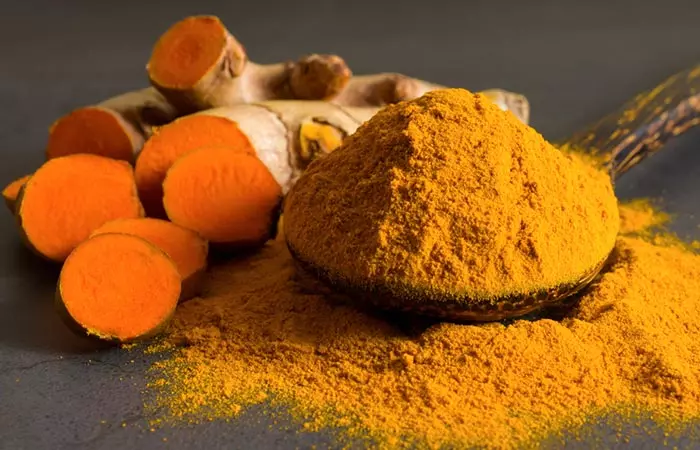
Turmeric contains curcumin that possesses antimicrobial activity and blocks bacterial growth (16). Hence, turmeric may be an excellent option for treating bacterial vaginosis. Additionally, turmeric may help support the immune system, preventing recurrent infections (17).
You Will Need
- 1 teaspoon of turmeric powder
- 1 cup of hot milk
What You Have To Do
- Add a teaspoon of turmeric powder to a cup of hot milk and stir well.
- Consume this mixture.
How Often You Should Do This
Consume this mixture once a day.
9. Cold Compress
Ice packs help constrict blood vessels, reducing inflammation, pain, itchiness, and other related symptoms (18). Hence, using an ice pack may provide immediate relief from the irritating symptoms of bacterial vaginosis.
You Will Need
- Ice cubes
- A clean washcloth
- A plastic cover
What You Have To Do
- Place a few ice cubes inside a clean washcloth.
- Put the wrapped washcloth inside a plastic cover and seal it.
- Apply the cold compress directly to your vagina.
- Repeat after every few minutes.
- Alternatively, you can also cleanse your vagina with cold water.
How Often You Should Do This
Do this 2-3 times a day.
10. Vitamin C
Vitamin C plays a key role in strengthening the immune system, crucial for fighting off infections, including bacterial vaginosis (19).
According to a study published in the Arzneimittelforschung journal, vitamin C vaginal tablets are effective in treating bacterial vaginosis. The study included 277 women who had symptoms of bacterial vaginosis, such as abnormal discharge and a higher vaginal pH. They were randomly assigned to use either 250 mg ascorbic acid (vitamin C) tablets or a placebo daily for six days. The results showed that:
- In the vitamin C group, 55.3% of women were treated successfully, compared to just 25.7% in the placebo group.
- In a stricter analysis, which looked only at women who followed the treatment plan exactly as directed, 66.4% of women in the Vitamin C group were cured, compared to 27.1% in the placebo group.
- A further analysis, where the researchers evaluated vaginal swabs in a more detailed way, showed an even bigger difference. 86.3% of women who used Vitamin C were cured, compared to just 7.6% with the placebo.
These findings suggest that vitamin C may help treat and manage the symptoms of bacterial vaginosis (20).
You Will Need
Vitamin C tablets
What You Have To Do
Take one tablet after consulting your doctor.
How Often You Should Do This
Do this once a day.
11. Cranberry Juice

Cranberry juice is used in the treatment of urinary tract infections due to its antibacterial properties (21). The antibacterial properties of cranberries may help combat bacterial vaginosis naturally.
You Will Need
Unsweetened cranberry juice
What You Have To Do
Consume a cup of unsweetened cranberry juice.
How Often You Should Do This
Do this once a day.
Note: While the above home remedies may help treat bacterial vaginosis, it is important to consult your doctor and get a proper diagnosis. These remedies may be suitable for mild cases where symptoms are manageable and you have previously been diagnosed by a doctor. However, if it is your first time experiencing bacterial vaginosis symptoms, seek medical attention. Additionally, if symptoms persist, worsen, or recur frequently despite trying home remedies, or if you are pregnant, it is crucial to consult a healthcare provider for appropriate treatment to prevent complications.
These remedies can help treat bacterial vaginosis. Though you cannot always prevent this infection, you can take the following precautions to steer clear of it.
Prevention Tips
- Avoid multiple sex partners.
- Use a condom during sex, as sexual activity can introduce new bacteria to the vaginal area.
- Avoid douching. (Over irrigation can lead to pH imbalance in the vagina) (22).
- Consume foods containing healthy bacteria called Lactobacillus acidophilus (like kefir and yogurt). This may help balance the vaginal ecosystem (23).
- Avoid sugary, processed, and fermented foods. Instead, have a balanced diet to support your overall immune health and prevent infections, such as bacterial vaginosis (24).
- Clean the genital area daily with water. Avoid using harsh soaps, douches, or scented products, as they can disrupt the natural balance of bacteria in the vagina (25).
- Avoid tight-fitting clothes that can cause moisture buildup and encourage bacterial growth.
Vaginal pH is a key indicator of the vaginal health. Since bacterial vaginosis may lead to pH imbalance, trying to restore vaginal pH balance naturally may help manage the condition and maintain vaginal health to a certain extent.
 Quick Tip
Quick TipLet’s now understand the causes, symptoms, and possible complications of bacterial vaginosis.
What Causes Bacterial Vaginosis?
The main cause of bacterial vaginosis is a disrupted natural balance of bacteria in the vagina. Normally, Lactobacillus bacteria help keep the vagina healthy. However, in bacterial vaginosis, these good bacteria decrease, allowing other harmful bacteria to take over. One of the main culprits is the Gardnerella vaginalis bacteria, known to start the infection. This bacteria forms a protective layer, called a biofilm, that makes it easier for more harmful bacteria to grow. Additionally, Gardnerella vaginalis produces a toxin called vaginolysin that damages cells and worsens the infection (2). This imbalance may occur due to various factors that include (2), (26):
- Having more than one (or a new) sex partner
- Increased sexual activity frequency
- Douching
- Smoking
- Vaginal infections
- Antibiotics
- Contraceptives
- OTC intravaginal hygiene products
- Stress
Bacterial vaginosis is also common among women who have sex with women. This transmission may occur through direct genital contact or sharing sex toys that have come into contact with vaginal fluids. Studies show these individuals have a 60% higher risk for bacterial vaginosis compared to women with male partners (2).
Although bacterial vaginosis is more common in women who are sexually active, it can occur in other women as well (2). Scroll down to explore the signs and symptoms of this condition.
Signs And Symptoms Of Bacterial Vaginosis
Many women do not exhibit the symptoms of bacterial vaginosis. However, some symptoms of BV may include (2), (26):
- A thin white or gray vaginal discharge
- Pain, itching, or burning in the vagina
- A strong fish-like odor, especially after sex
- Burning when urinating
- Itching around the outside of the vagina
Vaginal odor, accompanied by yellowish discharge, is one of the most common indicators of bacterial vaginosis. Learning how to get rid of vaginal odor and keeping it clean may help you manage the odor. However, always consult a doctor before trying any remedies.
If you believe you have developed bacterial vaginosis, consult your gynecologist. This is especially important if you have another health issue as it may cause issues. A blogger shared her health journey dealing with PCOS, ulcerative colitis, and subsequent fertility issues. She also discussed how a treatment used to treat recurring bacterial vaginosis (BV) caused more complications for her. She writes, “I also had something wrong “down there”…bacterial vaginosis (BV)? yeast? It was slimy, smelly, and itchy. I was treated for both, and the flagyl they gave me for the BV apparently made my colitis “flare” (bleeding from the colon) (i).” Flagyl is an antibiotic medication prescribed to treat bacterial infections.
If you are experiencing any of these symptoms, it is important to consult with a healthcare provider for a proper diagnosis. Learn more in the next section.
Diagnosis Of Bacterial Vaginosis
Your healthcare provider will typically conduct a pelvic exam. They will check for the following types of abnormal vaginal discharge:
- Thin discharge
- Gray discharge
- White discharge with a fishy odor.
Your provider may also perform a wet mount test. They will take a sample of vaginal discharge and examine it under a microscope. The test can help identify clue cells, basically vaginal epithelial cells covered with bacteria, a characteristic sign of BV (2).
Another common diagnostic test is pH testing. The normal vaginal pH is acidic, but in BV, it becomes more alkaline. Your provider may use a special paper strip to measure the pH of your vaginal discharge (2).
While BV is often manageable, you should address it promptly to prevent potential complications. The next section covers some possible complications that may arise with BV.
Possible Complications Of Bacterial Vaginosis
Bacterial vaginosis may prove to be quite dangerous in the following situations:
- Bacterial vaginosis may increase the chances of miscarriage among pregnant women (27).
- Development of bacterial vaginosis during pelvic procedures (Cesarean section or abortion) may increase the risk of contracting a pelvic infection (28).
- Bacterial vaginosis may increase the chances of contracting sexually transmitted diseases like HIV (29).
Along with home remedies, it is recommended to seek medical treatment. Let’s see what that looks like in the next section.
Medical Treatment For Bacterial Vaginosis
Here are some medicines doctors are likely to prescribe to treat this condition:
- Metronidazole
Usually the first-line treatment for bacterial vaginosis (21). In the gel form, it may be inserted into the vagina.
- Clindamycin
To be applied inside the vagina in cream form or taken as a pill. Even though it is effective, it may lead to irritation, itching, and a burning sensation (31).
- Tinidazole
Administered orally, it has shown significant improvement in this condition (32). It is also a highly effective alternative to other medicines.
- Secnidazole
An effective oral antibiotic against various parasitic and bacterial infections (33). It may also lead to side effects such as nausea, diarrhea, and headache.
Infographic: Top 6 Home Remedies For Bacterial Vaginosis
The common condition known as bacterial vaginosis can be excruciating. It is caused by an imbalance of good and bad bacteria in the vagina. Luckily, you can manage the condition with simple home remedies. The infographic below highlights the top 6 remedies that may provide quick relief and help manage the symptoms. Take a look!
Some thing wrong with infographic shortcode. please verify shortcode syntaxThe imbalance between good and bad bacteria in the vagina triggers bacterial vaginosis. Using coconut oil, apple cider vinegar, yogurt, garlic, fenugreek, and cranberry juice effectively manages bacterial infection. In addition, hydrogen peroxide and tea tree oil can also help reduce bacterial vaginosis. Vitamin C and cold compress effectively work against bacterial vaginosis. You can also follow prevention tips like avoiding douching, using a condom during sex, avoiding multiple sex partners, including foods with healthy bacteria, and avoiding processed foods. If these remedies do not seem to help you, it is advised to consult a gynecologist as the serious symptoms indicate STIs.
Frequently Asked Questions
Can bacterial vaginosis cause infertility?
If left untreated, bacterial vaginosis can spread to the uterus and fallopian tubes and cause pelvic inflammatory diseases. This can damage the fallopian tubes and cause infertility (34).
Why does my vagina smell like fish?
If your vagina smells like fish, it means that you have contracted bacterial vaginosis, and thus, you must avail treatment immediately.
What is the difference between bacterial vaginosis and a yeast infection?
If you notice a white vaginal discharge that looks like clumpy cottage cheese and is odorless or smells of yeast, it means you have developed a yeast infection. But if you notice a yellowish or grayish vaginal discharge that smells like fish, it usually indicates that you have got bacterial vaginosis. Different pathogens may trigger different symptoms and some overlap in treatment. However, each pathogen must be addressed uniquely. Specific home remedies for yeast infection or bacterial infection can help and be greatly effective.
How long does bacterial vaginosis last?
Most often, bacterial vaginosis is a minor issue that resolves by itself in a few days. However, it may cause complications in certain cases and the symptoms may last for weeks. Visit a doctor if you feel the condition is aggravating.
Does stress cause BV?
Yes. Increased psychological stress is often linked to a higher prevalence and incidence of bacterial vaginosis. However, more studies are warranted to understand how stress makes people more vulnerable to BV (35).
Is BV contagious in males?
No, men cannot get bacterial vaginosis. However, they may spread the infection.
Can BV turn into chlamydia?
Yes. If left untreated, BV might increase your chances of contracting chlamydia (36).
What is the best medication for BV?
Antibiotics like metronidazole and clindamycin can effectively treat bacterial vaginosis (37).
Can probiotics cure BV?
Oral or vaginal probiotics seem to successfully treat and reduce recurrent bacterial vaginosis. However, the dose, method, and treatment procedures vary widely between trials, though participants from many studies have indicated a significant decrease in bacterial vaginosis recurrence (38).
Illustration: Best Home Remedies To Get Rid Of Bacterial Vaginosis

Image: Dall·E/StyleCraze Design Team
References
Articles on StyleCraze are backed by verified information from peer-reviewed and academic research papers, reputed organizations, research institutions, and medical associations to ensure accuracy and relevance. Read our editorial policy to learn more.
- Koumans, Emilia H., et al. “The prevalence of bacterial vaginosis in the United States, 2001–2004; associations with symptoms, sexual behaviors, and reproductive health.” Sexually transmitted diseases 34.11 (2007): 864-869.
https://www.jstor.org/stable/44966649 - Norah Kairys et al. “Bacterial vaginosis.” StatPearls Publishing; 2025 Jan.
https://www.ncbi.nlm.nih.gov/books/NBK459216/ - Spiegel, C. A. “Bacterial vaginosis.” Clinical Microbiology Reviews4 (1991): 485-502.
https://journals.asm.org/doi/abs/10.1128/cmr.4.4.485 - Peedikayil, Faizal C et al. “Comparison of antibacterial efficacy of coconut oil and chlorhexidine on Streptococcus mutans: An in vivo” Journal of International Society of Preventive & Community Dentistry vol. 6,5 (2016): 447-452.
https://www.ncbi.nlm.nih.gov/pmc/articles/PMC5109859/ - Shilling, Michael, et al. “Antimicrobial effects of virgin coconut oil and its medium-chain fatty acids on Clostridium difficile.” Journal of medicinal food12 (2013): 1079-1085.
https://pubmed.ncbi.nlm.nih.gov/24328700/ - Sandeep R Varma et al. “In vitro anti-inflammatory and skin protective properties of Virgin coconut oil.” J Tradit Complement Med. 2018 Jan 17;9(1):5–14.
https://pmc.ncbi.nlm.nih.gov/articles/PMC6335493/ - Yagnik, Darshna et al. “Antimicrobial activity of apple cider vinegar against Escherichia coli, Staphylococcus aureus and Candida albicans; downregulating cytokine and microbial protein expression.” Scientific reports 8,1 1732.
https://www.ncbi.nlm.nih.gov/pmc/articles/PMC5788933/ - Samad, Anuar, Azrina Azlan, and Amin Ismail. “Therapeutic effects of vinegar: a review.” Current Opinion in Food Science8 (2016): 56-61.
https://www.sciencedirect.com/science/article/abs/pii/S2214799316300479 - Cardone, A., et al. “Utilisation of hydrogen peroxide in the treatment of recurrent bacterial vaginosis.” Minerva ginecologica6 (2003): 483-492.
https://pubmed.ncbi.nlm.nih.gov/14676737/ - Ankri, Serge, and David Mirelman. “Antimicrobial properties of allicin from garlic.” Microbes and infection2 (1999): 125-129.
https://www.sciencedirect.com/science/article/pii/S1286457999800033 - Mohammadzadeh, Farnaz et al. “Comparing the therapeutic effects of garlic tablet and oral metronidazole on bacterial vaginosis: a randomized controlled clinical trial.” Iranian Red Crescent medical journal 16,7 (2014): e19118.
https://www.ncbi.nlm.nih.gov/pmc/articles/PMC4166107/ - Carson, C F et al. “Melaleuca alternifolia (Tea Tree) oil: a review of antimicrobial and other medicinal properties.” Clinical microbiology reviews 19,1 (2006): 50-62.
https://www.ncbi.nlm.nih.gov/pmc/articles/PMC1360273/ - Hammer, K A et al. “In vitro susceptibilities of lactobacilli and organisms associated with bacterial vaginosis to Melaleuca alternifolia (tea tree) oil.” Antimicrobial agents and chemotherapy 43,1 (1999): 196.
https://www.ncbi.nlm.nih.gov/pmc/articles/PMC89050/ - Homayouni, Aziz, et al. “Effects of probiotics on the recurrence of bacterial vaginosis: a review.” Journal of lower genital tract disease1 (2014): 79-86.
https://www.ncbi.nlm.nih.gov/pubmed/24299970 - Dash, BK, et al. “Antibacterial Activities of Methanol and Acetone Extracts of Fenugreek (Trigonella Foenum) and Coriander (Coriandrum Sativum).” Life Sciences and Medicine Research, Volume 2011: LSMR-27.
https://www.semanticscholar.org/paper/Antibacterial-Activities-of-Methanol-and-Acetone-of-Dash/168acbb6e556677e9d865ae8fe65bab3667c5d9b?p2df - Naz, R. K., and M. L. Lough. “Curcumin as a potential non-steroidal contraceptive with spermicidal and microbicidal properties.” European Journal of Obstetrics & Gynecology and Reproductive Biology176 (2014): 142-148.
https://www.sciencedirect.com/science/article/pii/S0301211514000505 - Alessandro Allegra et al. “The Impact of Curcumin on Immune Response: An Immunomodulatory Strategy to Treat Sepsis.” Int J Mol Sci. 2025 Nov 25;23(23):14710.
https://pmc.ncbi.nlm.nih.gov/articles/PMC9738113/ - Nemet, Dan et al. “Effect of local cold-pack application on systemic anabolic and inflammatory response to sprint-interval training: a prospective comparative trial.” European journal of applied physiology 107,4 (2009): 411-7.
https://www.ncbi.nlm.nih.gov/pmc/articles/PMC2762537/ - Anitra C Carr et al. “Vitamin C and Immune Function.” Nutrients. 2017 Nov 3;9(11):1211.
https://pmc.ncbi.nlm.nih.gov/articles/PMC5707683/ - Petersen, Eiko E., et al. “Efficacy of vitamin C vaginal tablets in the treatment of bacterial vaginosis: a randomised, double blind, placebo controlled clinical trial.” Arzneimittelforschung04 (2011): 260-265.
https://pubmed.ncbi.nlm.nih.gov/21650086/ - Rodríguez-Pérez, Celia, et al. “Antibacterial activity of isolated phenolic compounds from cranberry (Vaccinium macrocarpon) against Escherichia coli.” Food & function3 (2016): 1564-1573.
https://www.ncbi.nlm.nih.gov/pubmed/26902395 - Solomon Wireko et al. “Vaginal douching and health risks among young women.” Health Sci Rep. 2025 Feb 14;7(2):e1882.
https://pmc.ncbi.nlm.nih.gov/articles/PMC10865275/ - Peng Liu et al. “Use of probiotic lactobacilli in the treatment of vaginal infections: In vitro and in vivo investigations.” Front Cell Infect Microbiol. 2025 Apr 3;13:1153894.
https://pmc.ncbi.nlm.nih.gov/articles/PMC10106725/ - Caroline E Childs et al. “Diet and Immune Function.” Nutrients. 2019 Aug 16;11(8):1933.
https://pmc.ncbi.nlm.nih.gov/articles/PMC6723551/ - Prachi A Ughade et al. “Navigating the Microbial Landscape: Understanding Dysbiosis in Human Genital Tracts and Its Impact on Fertility.” Cureus. 2025 Aug 16;16(8):e67040.
https://pmc.ncbi.nlm.nih.gov/articles/PMC11403153/ - Rutuja Khedkar et al. “Bacterial Vaginosis: A Comprehensive Narrative on the Etiology Clinical Features and Management Approach.” Cureus. 2025 Nov 10;14(11):e31314..
https://pmc.ncbi.nlm.nih.gov/articles/PMC9735379/ - Ralph, S. G., A. J. Rutherford, and J. D. Wilson. “Influence of bacterial vaginosis on conception and miscarriage in the first trimester: cohort study.” Bmj7204 (1999): 220-223.
https://www.bmj.com/content/319/7204/220.short - Stevenson, M. M., and K. W. Radcliffe. “Preventing pelvic infection after abortion.” (1995): 305-312.
https://www.ncbi.nlm.nih.gov/pubmed/8547409 - About Bacterial Vaginosis (BV)
https://www.cdc.gov/bacterial-vaginosis/about/?CDC_AAref_Val=https://www.cdc.gov/std/bv/stdfact-bacterial-vaginosis.htm - Impact of oral metronidazole treatment on the vaginal microbiota and correlates of treatment failure
https://www.ncbi.nlm.nih.gov/pmc/articles/PMC6995998/#:~:text=Metronidazole%20is%20the%20first%2Dline,suboptimal%20and%20recurrence%20rates%20high. - Clindamycin
https://ncbi.nlm.nih.gov/books/NBK519574/ - Tinidazole in the treatment of bacterial vaginosis
https://www.ncbi.nlm.nih.gov/pmc/articles/PMC2971702/ - LiverTox: Clinical and Research Information on Drug-Induced Liver Injury
https://www.ncbi.nlm.nih.gov/books/NBK548222/ - Liversedge, N. H., et al. “The influence of bacterial vaginosis on in-vitro fertilization and embryo implantation during assisted reproduction treatment.” Human reproduction9 (1999): 2411-2415.
https://academic.oup.com/humrep/article/14/9/2411/3114010 - The association of psychosocial stress and bacterial vaginosis in a longitudinal cohort
https://www.ncbi.nlm.nih.gov/pmc/articles/PMC2367104/ - Association of Bacterial Vaginosis With Chlamydia and Gonorrhea Among Women in the U.S. Army
https://pubmed.ncbi.nlm.nih.gov/27816380/#:~:text=For%20every%20one%20additional%20episode,subsequent%20chlamydia%20and%20gonorrhea%20infection - Which treatments are effective for bacterial vaginosis?
https://www.ncbi.nlm.nih.gov/books/NBK298830/ - Probiotics for preventing recurrent bacterial vaginosis
https://journals.lww.com/jaapa/fulltext/2025/02000/probiotics_for_preventing_recurrent_bacterial.2.aspx#:~:text=Multiple%20studies%20have%20shown%20that,of%20recurrence%20of%20bacterial%20vaginosis
Read full bio of Dr. Millie Lytle
Read full bio of Sucharita Mishra
Read full bio of Arshiya Syeda
Read full bio of Dipti Sharma










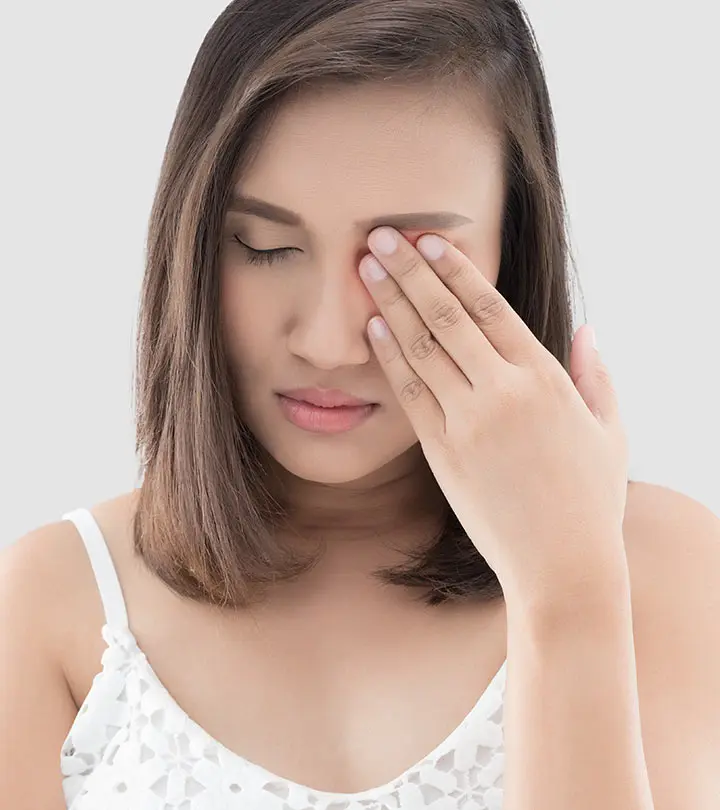
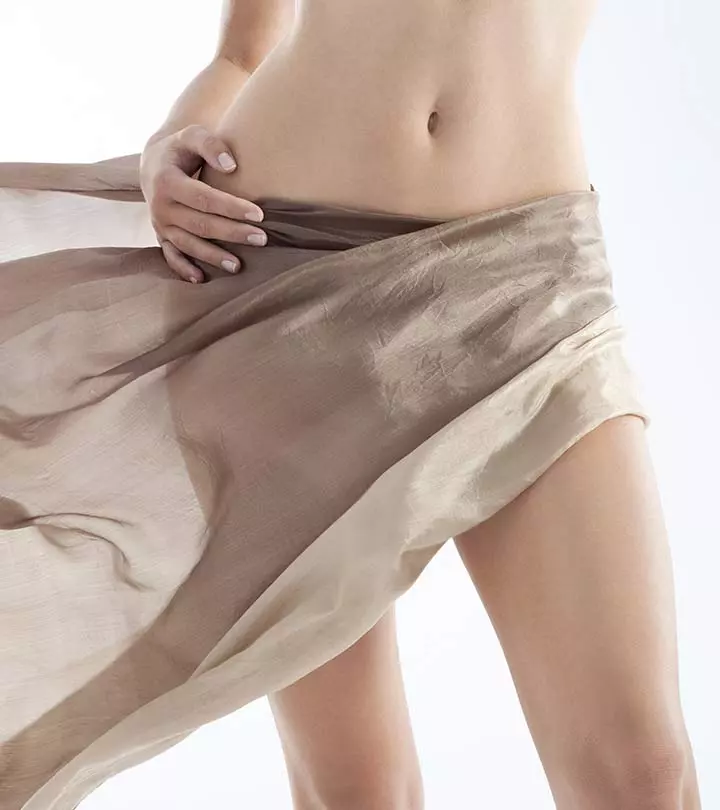




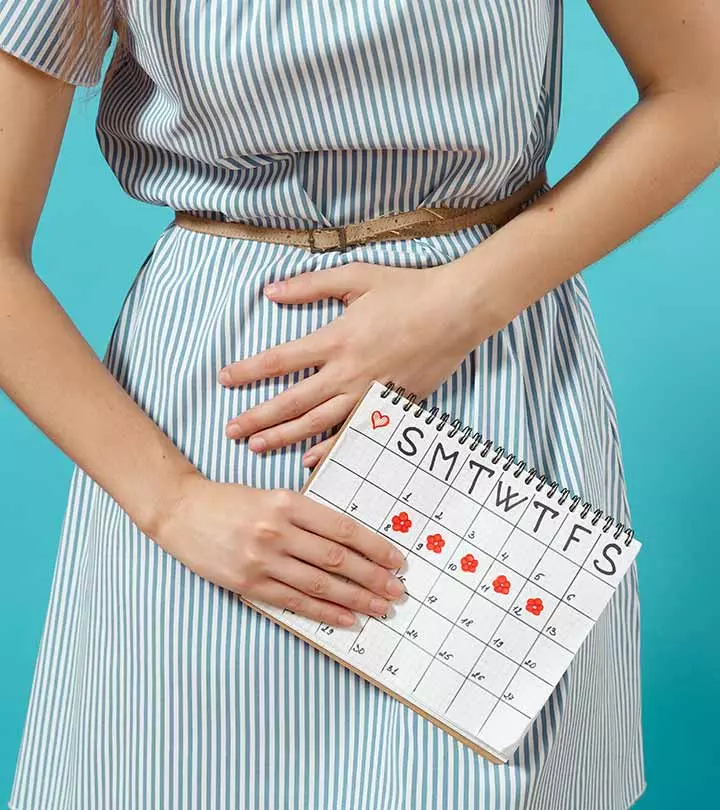










Community Experiences
Join the conversation and become a part of our empowering community! Share your stories, experiences, and insights to connect with other beauty, lifestyle, and health enthusiasts.